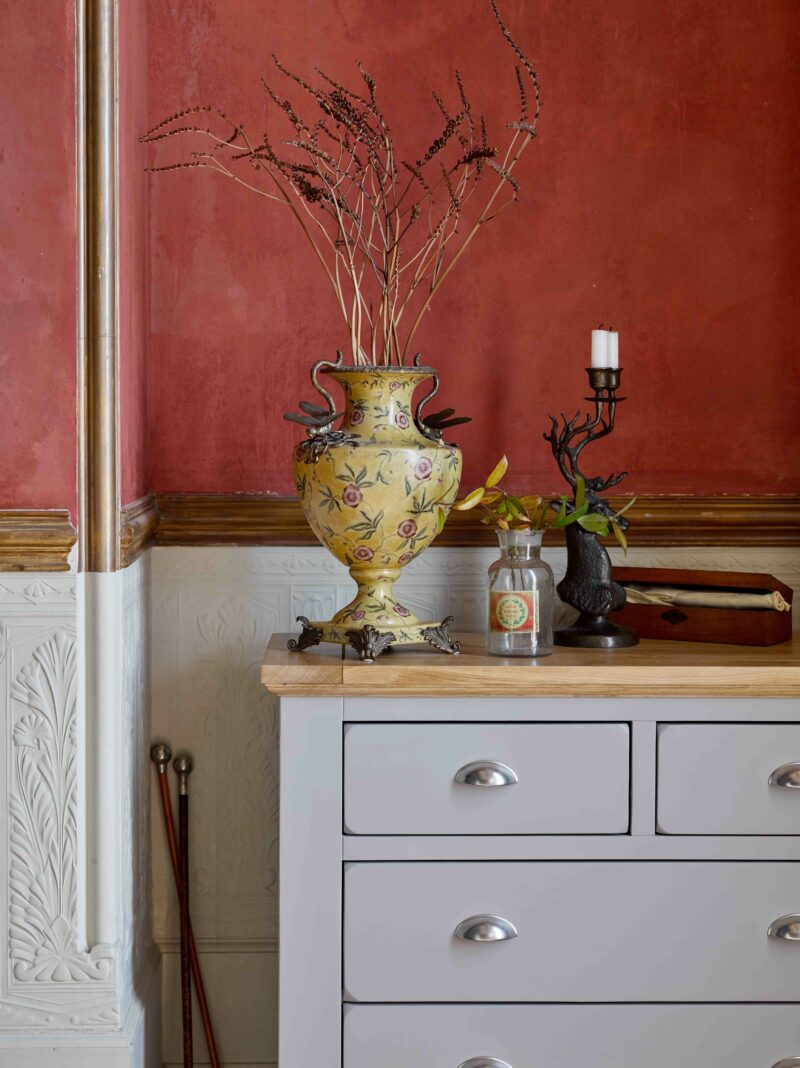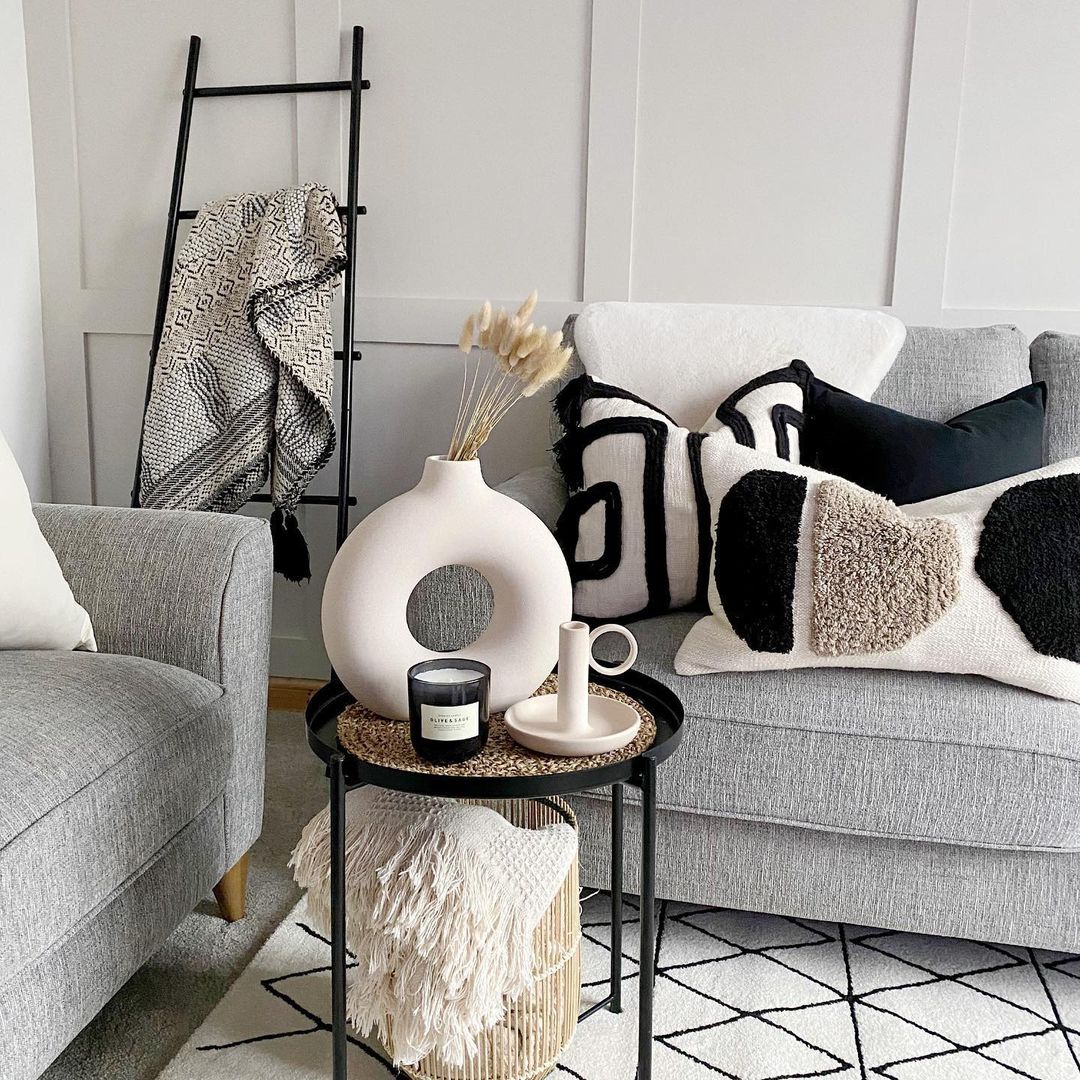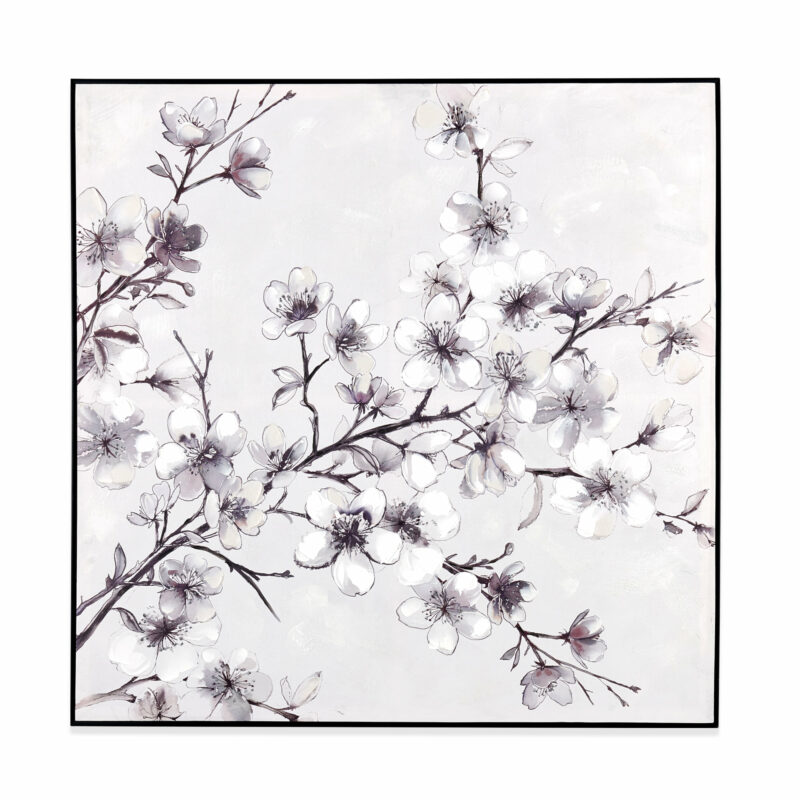Let’s get inspired! Whether you’re completing a new build, remodelling, or renovating and looking to style your entire home, or are just interested in learning clever ways to spruce up a room’s current appearance, we have you covered. It’s never too early or too late to start learning about how to style your home so you can love your surroundings.
Here we guide you through the following important elements of home styling 101.
- Tips and tricks
- Creating a furniture layout plan
- Crucial considerations for selecting furniture
- Finishing touches
- Art placement
- The importance of plants
Tips and tricks for home styling
It’s important to have a plan and a clear vision of the style you like and what your budget is. Without this you won’t have a starting point, may feel overwhelmed and it’s likely you will be second guessing your choices.
Research
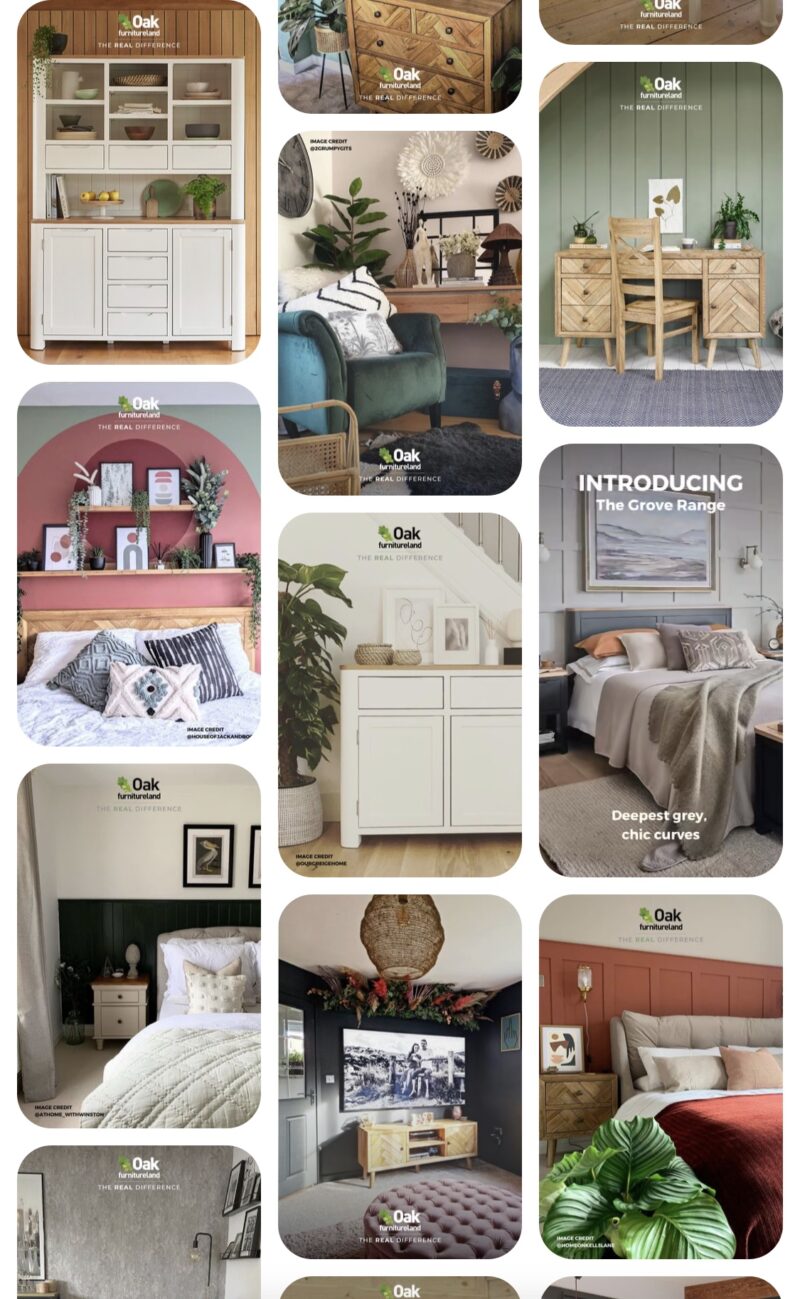
The easiest and most fun way to develop a plan and gain a clearer vision is through researching and seeking inspiration. Sourcing images online and creating a dream board or inspiration board will help you to get a better feel for the styles that best suit your taste and your home. Canva is a great tool or even Powerpoint or Word can be used to create a mood board by laying out interiors, furniture, lighting, and decor images on a page. Not forgetting Pinterest too, which is a great starting point to collate your favourite design inspiration.
Refer to a moodboard
Once you have your mood board, refer to it often, prior to choosing products for your home. This will help you to make decisions about whether the product you are considering will work. You can also use this mood board as a tool to present to furniture showrooms and interior decor stores. They can assist you to find the right pieces to best suit your style theme.
Create a product page
When shopping for products, either save images or take photos of them and place them all on a page together. Seeing products side by side will make it much more obvious if they work well together or not.
Creating a furniture layout plan
Furniture placement is very important. Creating a furniture layout plan will help you to determine what size furniture will work best in the space, and what locations will be better for placement.
There are plenty of drafting applications, free drag and drop software programmes or apps if you’re tech savvy however, if you like to take a more hands-on approach, here’s how to create a furniture plan the old school way in three easy steps.
Step 1: Measure your space
Measure your room and sketch the layout, recording dimensions as you go. You can then use a scale ruler to transfer these measurements to graph paper using a scale ruler.
Step 2: Create furniture templates
It’s possible to download furniture templates online, print them out and cut them up to lay on top of your floor plan. Alternatively, you can draw them onto graph paper to size and cut them out. This way you have the flexibility to move the pieces about freely rather than having to erase and redraw in a different location! Alternatively you can buy plastic furniture stencils that are to scale.
What you’ll need:
Tape measure
Graph paper
Scale ruler (use 1:100 for a whole house or 1:50 for a room)
Pencil and eraser
Step 3: Planning considerations
Create a focal point
When space planning your layout, try to create a welcoming focal point with furniture. For example; when you enter a room it’s nice to be greeted by a striking artwork or an inviting sofa facing toward you. You don’t want to enter a room to be met with the hard corner of a furniture item jutting out or even the back of a sofa if you can help it.
Maintain a good flow through
Consider how you will move through the space. You should be able to enter and exit freely without bumping into anything. Ensure traffic routes into other areas are left open.
Crucial considerations for selecting furniture
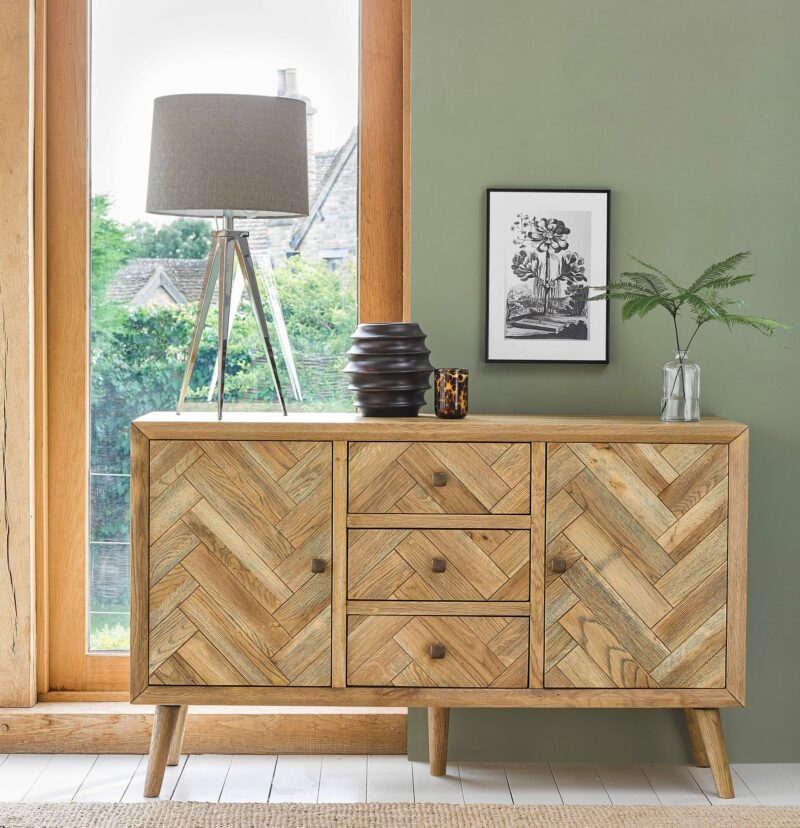
Size matters
Furniture should always be proportionate to the room. If you are working with a smaller space, look for smaller scale furniture items to prevent the room from appearing cluttered and vice versa. For a larger room heavier looking or oversized pieces may help it to feel more cosy.
Design flexibility and multi-purpose furniture
Selecting furniture that can be used in different ways is useful to consider. For example, occasional furniture that can be shifted or rotated when entertaining guests could be advantageous if needing a different layout scenario.
In addition, furniture pieces that are multi-use may also be of benefit such as a console table that folds out to a dining table, or a nesting coffee table that can be used as side tables, or a sofa or an ottoman that can fold out to a guest bed.
Fit for purpose fabrics and finishes
Fabrics and finishes must always be fit for purpose. It’s probably no good buying a stunning white sofa if you have toddlers and pets. However impressive it may look at the store, you will have deep regret in a few weeks’ time if the fabric is not designed to repel spills and dirt.
When considering finishes, ensure they will work with the existing finishes within the home. For example; if you have stainless steel fittings throughout the house, brass accents can look out of place. The same goes for timber finishes. If you have hardwood floors, check any furniture timber you select will complement and not complete with the tones of the flooring.
Finding the balance in your budget
You don’t have to spend an obscene amount of money to dress a space well. The key is to find a balance between investing in a couple of key pieces that will have a big impact within the room, and saving on other accent pieces that won’t have as much prominence. For example, a beautiful piece of artwork, a stunning rug or an amazing table lamp might be worth the spend as that item may act as your ‘wow factor’ focal point.
Finishing touches
As small and insignificant as they may seem, these are elements of an interior that tie everything together and help to make a house feel like a home. Decorative accents and finishing touch furnishings introduce pops of colour, tactile textures and add interest to a room.
Create balance
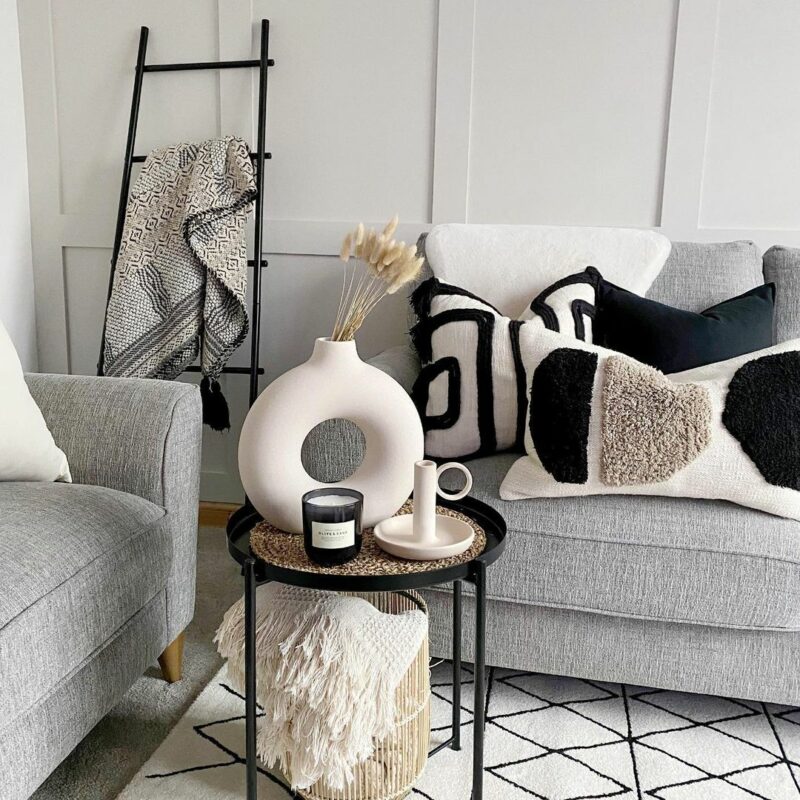
Jensen sofa | @interiors_at_hollys
The key is to create balance and not to overdo it with colour, pattern or texture. Look for a statement piece to become the ‘hero’ and then select decor and occasional furniture items to complement it and the other finishes around the home. Often, less is more, these pieces should not compete for attention and should be just enough to add visual interest without overpowering the space
Showcase decor object in mini vignettes
Create clusters or little groupings of objects (around 3-5, odd numbers are best). This could be a series of three vessels at varying heights, a small tray with a plant, vase and book, a bowl with beads stacked on top of some books. These little groupings can tell a story and reflect who you are and what you love.
Art placement
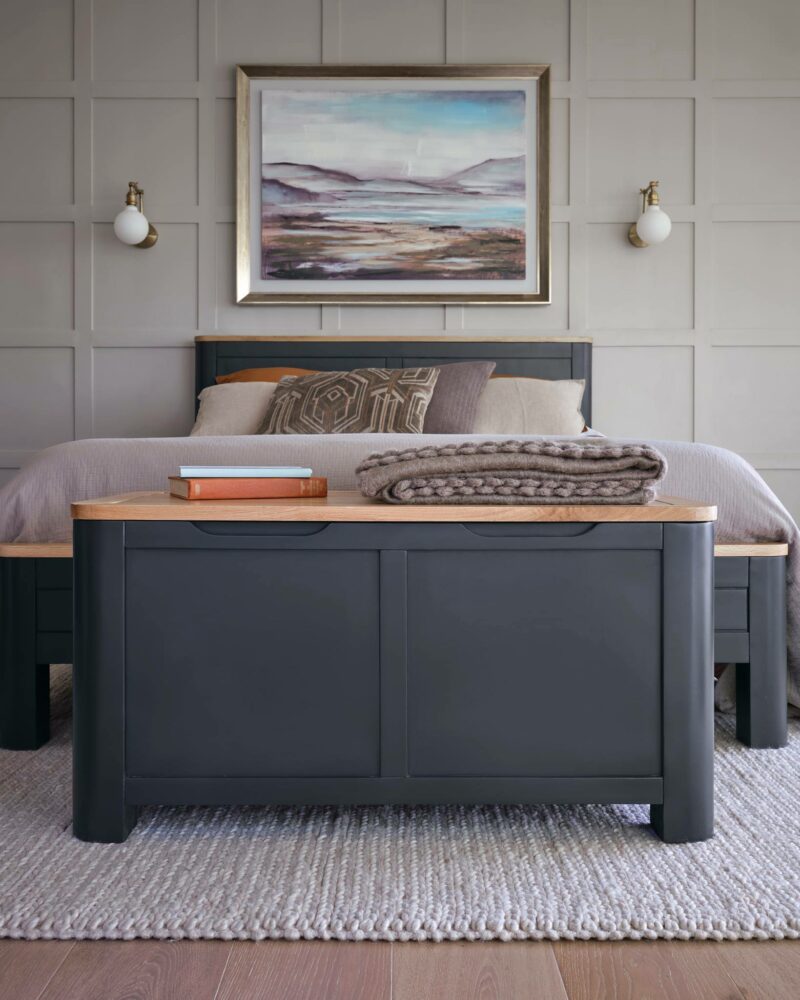
A breath of air wall art | Grove double bed | Grove blanket box
Art can make or break a space. It’s a very personal choice and often it’s tricky to decipher between what you love and what will work within the space. It’s important not to look at art in isolation and fall in love with a piece. Consider the other elements within the room and be sure that it will enhance the space and not look out of place.
Creating a vibe
Art helps to evoke a mood or feeling so a good starting point is to decide what type of vibe you wish to create in your home.
Colour scheme
Next, consider the colour palette for your space. What colours will work back with the style you created in your mood board? Do you have an underlying theme you want to create with regard to the style? This can all be reflected in your art choices.
Size matters here too
The scale of the artwork should suit the size of the wall it will be hung from. Orientation is also important. Portrait or landscape? If unsure, grab some removable masking tape and tape out the size of the artwork on your wall to see if it’s going to be a good fit. It’s good to note that artwork doesn’t have to always be centred on something. We often see a landscape piece hung above a sofa in the centre of the wall. However, a portrait piece hung to the left or right of a sofa can also be just as successful.
The importance of plants
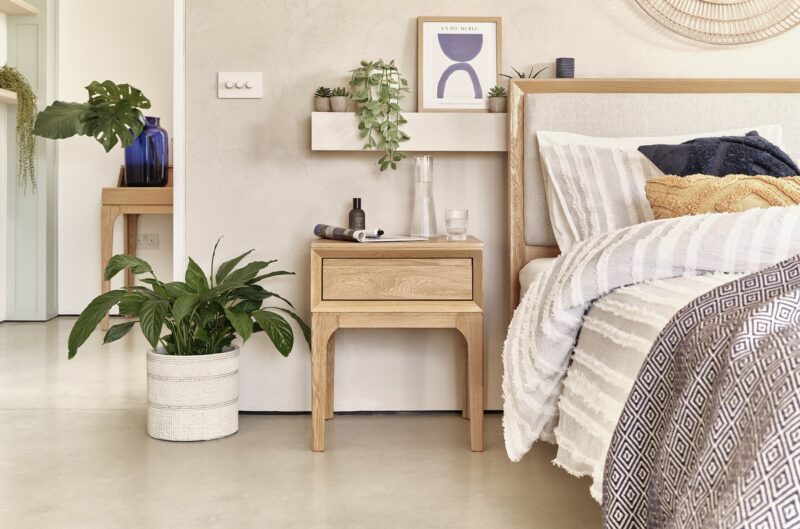
Aston bedside table | Aston bed
Plants breathe life into space and help to create a sense of wellbeing and energy. When selecting plants ensure they are suitable for indoor use and can receive enough filtered light.
Again scale and proportion should be considered. You may need some tall plants such as a Fiddle-Leaf Fig, Monstera, or Yucca to fill a space and smaller accent plants such as a succulent to add colour to a shelf or table. Be mindful to carefully select pots, vases, and vessels that will work well with your interior scheme and be sure to select the right size for the plant.
Final tips
Remember, your home should be an expression of who you are and what you love; your personality should shine through! Don’t be afraid to mix and match pieces to create an eclectic combination. An interior that is too matchy-matchy can appear contrived or boring. It’s often a matter of trial and error so don’t try to guess. Most importantly, enjoy the process and have fun!
